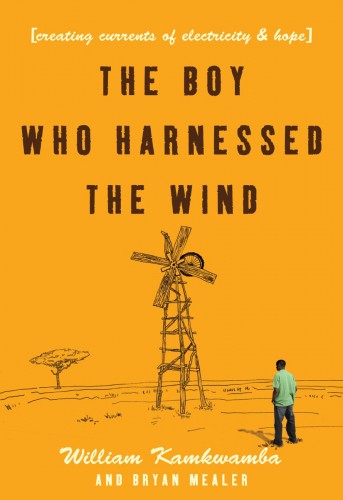
A thought that struck my mind as I was finishing this book was – How would the story of Wright brothers and their One day at Kitty Hawk be if they lived in an era with internet?
I read the Wright brothers story when I was in school and at that time all I was interested in was the journey of scientific discovery. The human part or the adversities faced by the brothers were totally lost on me. Now thirty years later I had in my hand a book which I felt was similar in spirit and I found myself lingering more around the parts where the life in the African village has been described – that is where the true story lies indeed.
The book tells the story of William Kamkwamba, a poor but clever boy in Malawi Africa . The story is very recent and all the incidents depicted happened in last 9 years, in fact I remember reading the blog post which made William famous.
The book can be divided in three parts . The first part paints the background of the canvas in which the story is set. Talking about Malawi, a small poor country where most people live as subsistence farmers, a race of people who have not changed for scores of years, about their lack of basic health care, superstition, a brutal incompetent government, lack of free public education, dangers of from animals and famine! In the year 2001 the maize crops failed leading to a devastating famine. The simple but vivid narrative of the hardships faced by the people during the famine is gut wrenching. The famine sets the scene for the second part of the story.
This second part is the story of William’s technological triumph. William is forced to drop out of the school because, after the famine, his parents cannot afford to send him to school. Deeply disappointed at this set back he does not give up. Always fascinated by mechanical things Willaim is particularly enamored by the dynamo of the bicycle, with very little theoretical knowledge and zero guidance he finds out that by putting the wires from the dynamo into the AC socket of a radio and turning the wheels you can get the radio to play. In the local library he finds a book called “Using Energy” which has pictures of windmills. The story continues on about how he constructs a windmill out of junk parts, a bicycle frame and flattened PVC pipe which can finally turn a dynamo and power a couple of light bulbs in his poor home. Charge mobile phones for people (in turn earn him some money) Interwoven in this in second part is a heroic story about human perseverance and brotherhood. William did not give up despite being ridiculed and not having proper tools just drove him to innovate. A heated wire served as a soldering iron, money from a friend served to buy a few parts – too many to enumerate here….
The third part is about the reward of being discovered by the world and of course the power of internet. Mike McKay wrote a blog entry about the Malawian Windmill which ultimately led to William being invited to speak about it in TED Global. It is amazing to read how a boy who had never stepped out of his village, never seen a laptop let alone internet traveled across the globe, thanks to generous sponsorships and the goodness of human kind.
After I finished the book, I started drawing parallels to the situations in the book closer home – specifically Melghat- barely 350km from Nagpur, 90% of the children are suffering from some grade of malnutrition. I had visited Malura there were Mobile phones but no electricity to charge them. They had a school but no examination center.
On a broader scale there is no dearth of small innovators in India, in fact the Discovery Channel ran a complete series on them but what really became of them? Have they been relegated to just youtube videos? May be I am being a bit pessimistic here. India is huge and things consequently are slower to change but things do change….